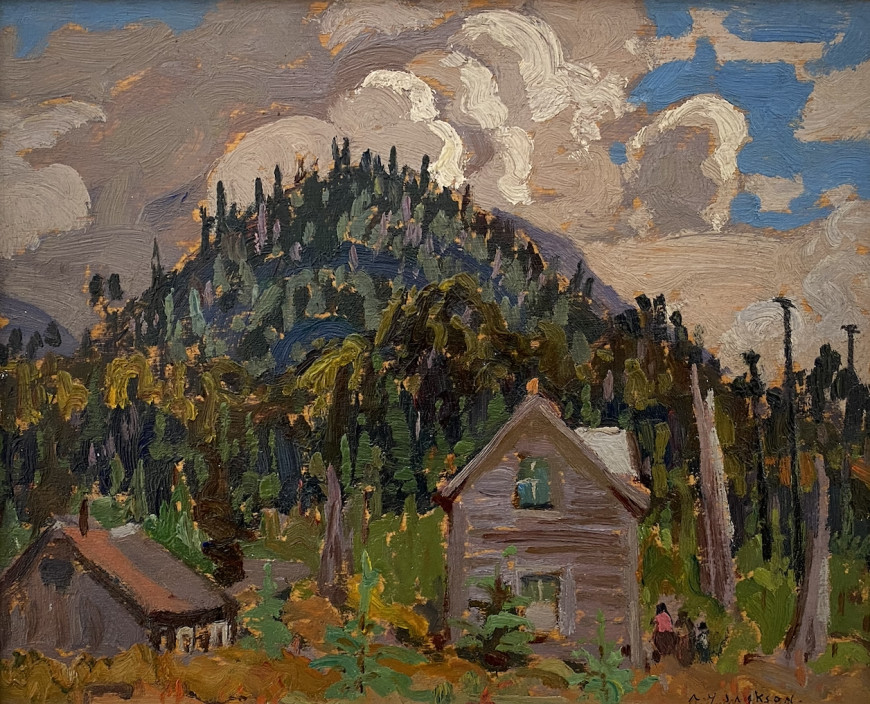-
Œuvres d'art
A.Y. JacksonIndian Houses with Totems, 19261882-1974Oil on panel8 1/2 x 10 1/2 in
21.6 x 26.7 cmSoldInscriptions
Verso, an unfinished composition of Lake Superior of 1921 signed ‘A.Y. JACKSON’ (recto, lower right); signed ‘A.Y. JACKSON’ (verso, lower right)Provenance
Laing Galleries, Toronto.
Private Collection, Toronto.
Catalogues
— Emily Carr wrote “Went with Miss Buell and Mrs. Housser to tea at Mr. A.Y. Jackson's Studio Building. I loved his things, particularly some snow things of Quebec and three canvases up Skeena River. I felt a little as if beaten at my own game. His Indian pictures have something mine lack — rhythm, poetry.”[2]
Much has been published about this now iconic trip to the Skeena River by A.Y. Jackson and Edwin Holgate in 1926. We have pasted in part of A.Y. Jackson’s description, in which he mentions his most successful canvas composed from the trip, Indian Home which at the time of this publication belonged to Isabel McLaughlin, now in the collection of the Robert McLaughlin Gallery in Oshawa.
“The Skeena River was dangerous, cold, swift and muddy with glacial silt. Back from the river one soon encountered bush that was almost a jungle. The Skeena had once been the main highway from the sea into the interior, and Indian villages were scattered along the banks. I went with Barbeau to find the remains of an old village that had completely disappeared in the jungle. We had axes and machetes, yet it took us an hour to go a hundred yards; nettles, Devil’s club, thimbleberry bushes eight feet high, and skunk cabbage, made the bush almost impenetrable. The totem poles had fallen to the ground and in the dank woods had almost disintegrated.
We stayed at Usk, Port Essington, and other places on the Skeena. Holgate painted a couple of bold totem-pole canvases and made a number of studies of Indians. I made many drawings and sketches, but I. worked up few canvases of this country. The most successful one, now owned by Isabel McLaughlin, was ‘Indian Home.”[3]
Indian Houses with Totems, 1926 is one of the sketches which served for his most successful canvas from that expedition.
_________
2.Emily Carr, “Hundreds and Thousands” in The Complete Writings of Emily Carr, p. 656.
3.Jackson, A Y. A Painter's Country: The Autobiography of A.Y. Jackson. Toronto: Clarke, Irwin, 1964, © 1958. p. 90.











